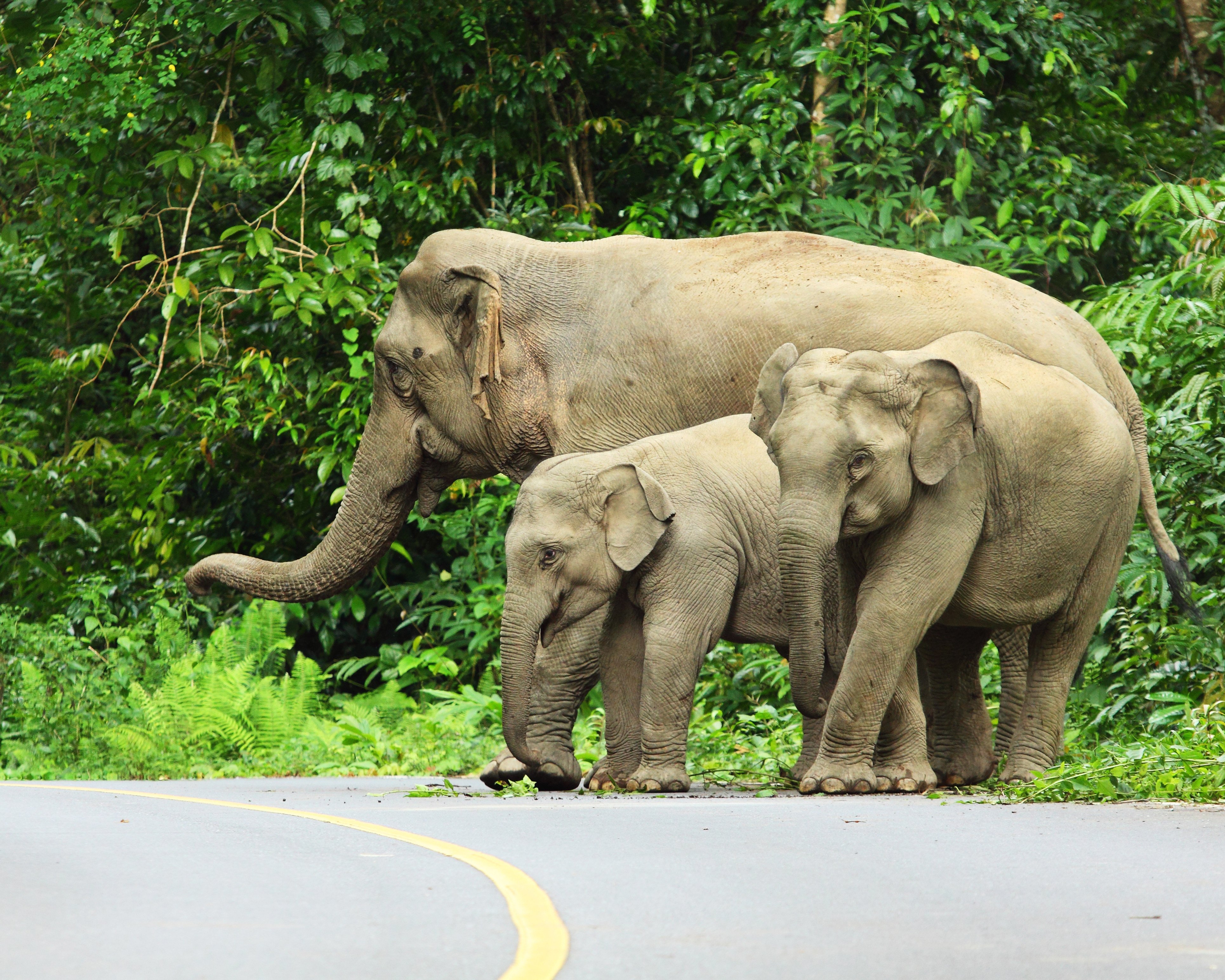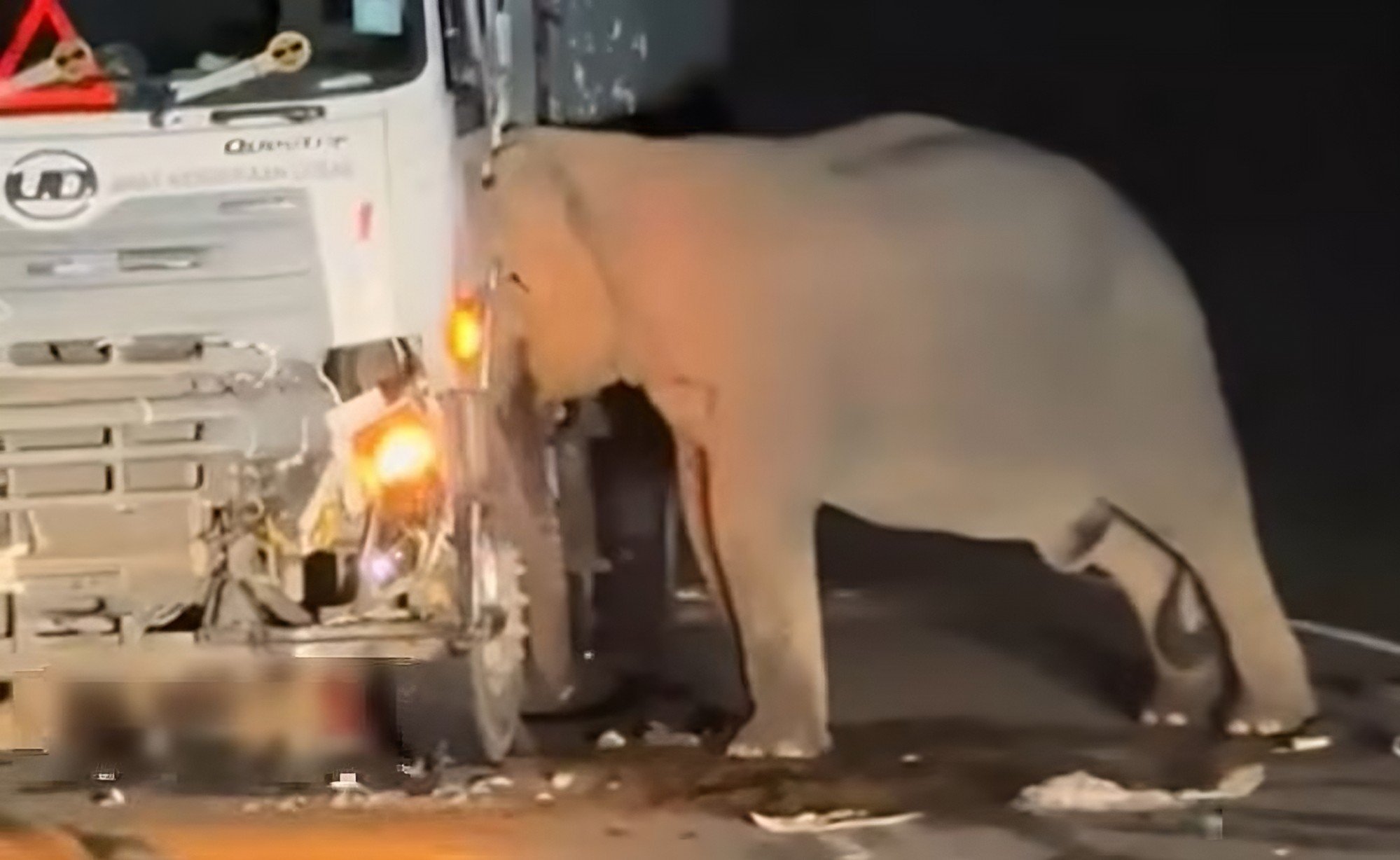Malaysia vows to protect elephants after calf’s death sparks outcry over lapsed promises
Eight elephants have been killed in traffic collisions in Peninsular Malaysia over the past five years, three of them in this year alone

The outpouring of grief over the death of an elephant calf that was hit by a truck on Mother’s Day has prompted Malaysian authorities to renew pledges to expand wildlife sanctuaries, road crossings and natural corridors to limit the risks posed by humans.
Footage of the mother elephant’s frantic attempts to rescue her calf, pinned beneath a 10-tonne (22,000-pound) truck on the East-West Highway, went viral in Malaysia, evoking a mix of sadness and anger as it reignited public criticism of the government’s unfulfilled wildlife protection promises.
The highway cuts through the 30,000-hectare (74,000-acre) Belum-Temenggor forest reserve, a known crossing point for elephants and the critically endangered Malayan tiger.
Eight elephants have been killed in traffic collisions in Peninsular Malaysia over the past five years, three of them in this year alone, according to Natural Resources and Environmental Sustainability Minister Nik Nazmi Nik Ahmad.

“It is not just a tragic accident, but reflects a major challenge in the relationship between humans and nature, particularly in our efforts to maintain the survival of wild species in an increasingly fragmented and discontinuous landscape,” Nik Nazmi said on Tuesday.
According to the Department of Wildlife and National Parks, there were 4,919 reports of human-elephant conflict between 2020 and 2024, resulting in property damages estimated at nearly 40 million ringgit (US$9.3 million).
To mitigate human-wildlife conflict, Nik Nazmi proposed a series of measures, including establishing a 10,000-hectare elephant sanctuary and linking fragmented habitats through ecological corridors that traverse plantations, private land and forested areas. He also suggested planting natural food sources in these corridors to reduce elephants’ reliance on commercial crops.
Meanwhile, the Works Ministry has announced that all new roads and highways will be required to incorporate wildlife crossing culverts into their designs. The ministry commended the developer of the West Coast Expressway for preserving an existing wildlife path by constructing such crossings, with guidance from the Department of Wildlife and National Parks.
“Until then, we sincerely hope that drivers will slow down and exercise caution when passing through wildlife crossing locations identified by signage and street lighting,” the ministry said in a social-media post.
Adding to the public’s unease, a separate TikTok video showing another elephant wandering along the same highway has also gone viral, with many mistaking it for the grieving mother elephant from Sunday’s incident.
However, closer inspection revealed it to be a different animal, as this one had visible tusks. Experts from the wildlife department had earlier noted that the mother might return to the scene, a behaviour typical of the species.